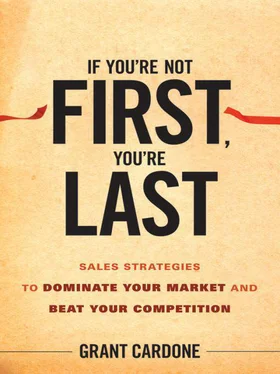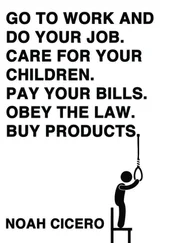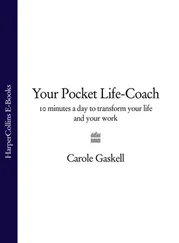Grant Cardone - If You're Not First, You're Last - Sales Strategies to Dominate Your Market and Beat Your Competition
Здесь есть возможность читать онлайн «Grant Cardone - If You're Not First, You're Last - Sales Strategies to Dominate Your Market and Beat Your Competition» — ознакомительный отрывок электронной книги совершенно бесплатно, а после прочтения отрывка купить полную версию. В некоторых случаях можно слушать аудио, скачать через торрент в формате fb2 и присутствует краткое содержание. Год выпуска: 2010, ISBN: 2010, Издательство: Wiley, Жанр: small_business, на английском языке. Описание произведения, (предисловие) а так же отзывы посетителей доступны на портале библиотеки ЛибКат.
- Название:If You're Not First, You're Last: Sales Strategies to Dominate Your Market and Beat Your Competition
- Автор:
- Издательство:Wiley
- Жанр:
- Год:2010
- ISBN:9780470645918
- Рейтинг книги:3 / 5. Голосов: 1
-
Избранное:Добавить в избранное
- Отзывы:
-
Ваша оценка:
- 60
- 1
- 2
- 3
- 4
- 5
If You're Not First, You're Last: Sales Strategies to Dominate Your Market and Beat Your Competition: краткое содержание, описание и аннотация
Предлагаем к чтению аннотацию, описание, краткое содержание или предисловие (зависит от того, что написал сам автор книги «If You're Not First, You're Last: Sales Strategies to Dominate Your Market and Beat Your Competition»). Если вы не нашли необходимую информацию о книге — напишите в комментариях, мы постараемся отыскать её.
If You're Not First, You're Last: Sales Strategies to Dominate Your Market and Beat Your Competition — читать онлайн ознакомительный отрывок
Ниже представлен текст книги, разбитый по страницам. Система сохранения места последней прочитанной страницы, позволяет с удобством читать онлайн бесплатно книгу «If You're Not First, You're Last: Sales Strategies to Dominate Your Market and Beat Your Competition», без необходимости каждый раз заново искать на чём Вы остановились. Поставьте закладку, и сможете в любой момент перейти на страницу, на которой закончили чтение.
Интервал:
Закладка:
What does this have to do with selling in a changing economy and being able to advance and conquer? Everything . Periods of contraction require that you enhance value by taking the following specific steps.
• Do a better job of identifying what the buyer is trying to accomplish with your product. “What is the number one thing you want this product to do for you or help you do?”
• Demonstrate how your product’s worth is greater than the price you are asking for it. Take the time to creatively build value that exceeds price and ensures that the prospect is making the right decision.
• Demonstrate how your product will sufficiently solve problems and why the customer will love it. People buy for two reasons: (1) to solve a problem; and (2) for love and to feel good. If they don’t believe one of those two things, price will not matter. “On a scale from 1 to 10, how would you rate this product?”
• Be sure that the proposition you are presenting is within your customer’s financial means. Having too much of a product is the fastest way of forcing you to cut your price.
• Become thoroughly versed in the fact that price is a myth—one that is disproven every day when people give up their money for something they desire. Check out my book, Sell to Survive , in which there is an entire chapter on this topic of the price myth, how it is a destructive belief, and how it is destructive to creating your own economy. You can find it at www.selltosurvive.com, or you can call my office at 1-800-368-5771.
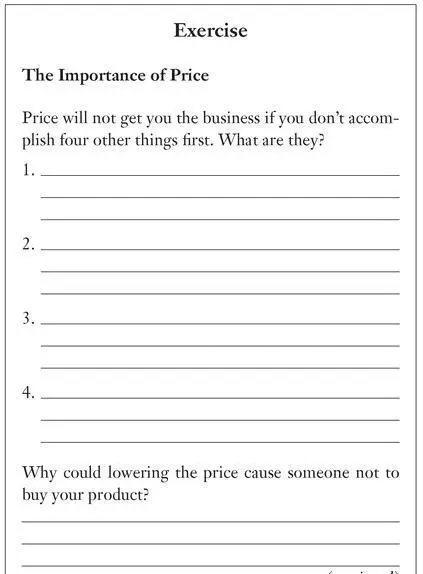
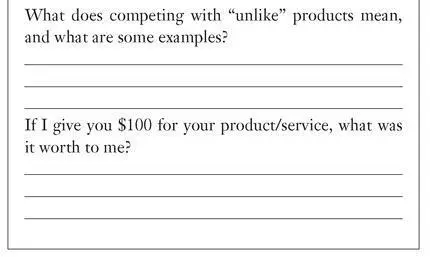
Learn more about the price myth.Visit www.grantcardone.com/resources
CHAPTER 9. Activate Second Sale to Boost Profits
One way to generate additional business is to maximize your first sales with add-ons or second sales. Though the second sale is actually easier to get than the first, 99.99 percent of all salespeople, managers, and companies miss this opportunity. You can spend hours and hours making the first sale but make a second sale (or add-on) in just a few minutes that will (1) be easier; (2) generate more profits; and (3) make your buyers even more satisfied with their purchases.
The problem is that most businesses and salespeople get so excited about the much-needed first sale that they are oblivious to and untrained in taking advantage of this additional opportunity. Because they lack proper training and erroneously believe that people buy on price, companies often do not attempt this second, easy sale. But your buyers will actually use ancillary purchases to support their first decisions; it’s a phenomenon that’s verified every day. Just visit Rodeo Drive in Beverly Hills. I dare you to find a person with only one bag in his or her arms. Or recall the last time you went to dinner and complained about the cost of that one special entrée you wanted to order. Yet once you agreed to reward yourself with that special entrée, you then continued to add other items. You asked to see the wine list, you splurged on an appetizer—you even ordered dessert. And you added all of these mere moments after fretting over the cost of the entrée.
No one is exempt from this inherently human tendency to spend additional money once the floodgates (or wallets) have been opened. People seem to use this second purchase to justify the earlier one. You can use this all-too-human habit to consummate the second sale by doing the following. Once the first sale is made, agreed upon, and closed—and after you have taken the time to congratulate the customer and acknowledge the purchase—suggest other possible add-ons to the first purchase. Even sensitive prospects who are on strict budgets will take you up on these second offers to justify their initial decision.
Again, make sure to suggest the additional service once the agreement has been made—not before. For instance, let’s say that you sell advertising and that you’ve put together an advertising campaign for a client’s company. Once you have made your presentation and proposal, agreed on price and terms, gone over the particulars, and closed the deal, congratulate the client and reiterate how helpful this program is going to be for him or her. Then suggest that the client increase the number of times he or she is going to run the ad or do a press release in addition to the initial ad. This second sale is easy, builds value for your client, and increases profits for your company.
Let’s say you sell furniture and have made a living room sale that includes a sofa, two chairs, and a coffee table. Once you have solidified this sale and assured the purchaser that he or she will love it, say, “May I make a suggestion? This rug and lamp fit perfectly with what you are getting today and greatly complement the other furniture. I think they give the room an even more completed look. What do you think about adding them to your order?” Or, let’s say you’re selling clothes to a buyer who has agreed to purchase a suit, shirt, and tie. As you’re ringing him up, you might want to say, “Congratulations. I know you are going to love these. May I suggest that you add this pair of shoes, a second tie, and these two shirts to keep this suit looking fresh all the time? It will allow you to create three outfits instead of just one.” Wait for him to ask how much. Most of the time, you will get part or all of this second order. If he agrees, congratulations—you just made another sale without having to work with another customer! Double down and double up, as they say in Vegas.
Remember: Second money is easier to get than first money, and these add-on sales allow you to maximize the time, energy, and effort you’ve already put forth. You have increased your sales without increasing your customer count—something that’s critical when there are fewer customers. This technique lets you increase the average dollar value of each project 25 to 40 percent or more with virtually no extra effort. I often look for ways to add ancillary assignments to the primary one. It’s good for me, and good for my clients. I get more work, and they get a more complete service. Try it yourself. I promise that it works! Your goal is to advance and conquer, and that requires that you make the decision to maximize every opportunity to increase your business. This will not be a time to rely on the economy in which you live and work. This commitment requires action and creativity.
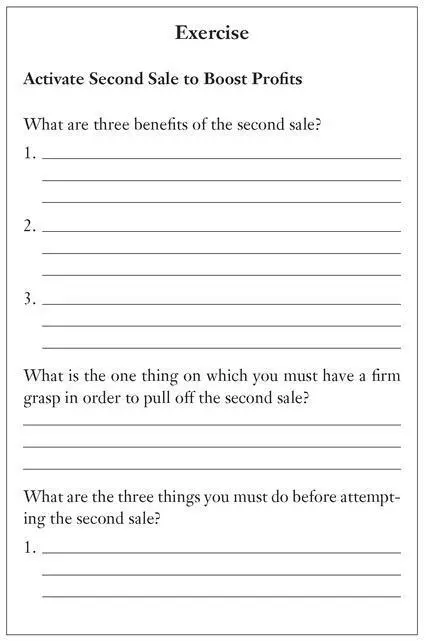
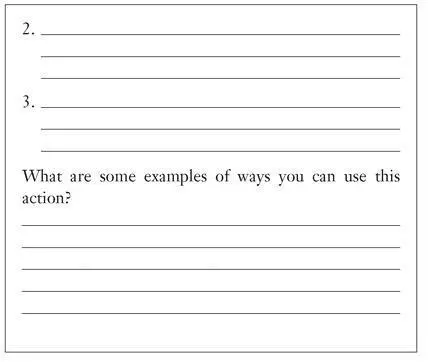
CHAPTER 10. The Value-Added Proposition
During a recession, depression, business downturn, or soft economy it is probably not the appropriate time for you to increase your fees or prices—even if you feel you deserve it. You should probably defer any planned fee-increase announcements until later and instead keep your fees at their current levels during such a period. This is the time to make creative, value-added offers that further enhance how well your product is perceived. Obviously, you want to be sensitive to the market, use it to demonstrate this extra value, and encourage people to do business with you.
Note: You are not going to make an announcement to your customers and prospects that you are “holding the line” on prices due to the recession because of your desire to help them through this time. No one will do business with you because you showed sympathy for them. What you will do is add value to the same services that you have sold in the past by bringing extra attention to the things your product or service does. You need to get even more creative than you have before and strongly emphasize how you and your company are going to support, service, and stand behind your products, services, and proposals. This doesn’t mean you give anything away nor should it be confused with using the second-sale strategy. However, it does mean that you’ll need to highlight the other services that are included with your offer that don’t cost the company or your client money. In addition to your product, you are going to offer what is referred to as value-added propositions, also known as unique selling propositions. A unique selling proposition is a real or perceived benefit of a good or service that differentiates it from the competing brands and gives buyers a logical reason to prefer your good or service over other brands.
Читать дальшеИнтервал:
Закладка:
Похожие книги на «If You're Not First, You're Last: Sales Strategies to Dominate Your Market and Beat Your Competition»
Представляем Вашему вниманию похожие книги на «If You're Not First, You're Last: Sales Strategies to Dominate Your Market and Beat Your Competition» списком для выбора. Мы отобрали схожую по названию и смыслу литературу в надежде предоставить читателям больше вариантов отыскать новые, интересные, ещё непрочитанные произведения.
Обсуждение, отзывы о книге «If You're Not First, You're Last: Sales Strategies to Dominate Your Market and Beat Your Competition» и просто собственные мнения читателей. Оставьте ваши комментарии, напишите, что Вы думаете о произведении, его смысле или главных героях. Укажите что конкретно понравилось, а что нет, и почему Вы так считаете.
